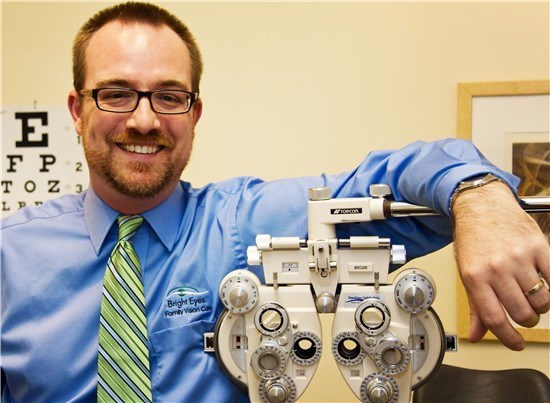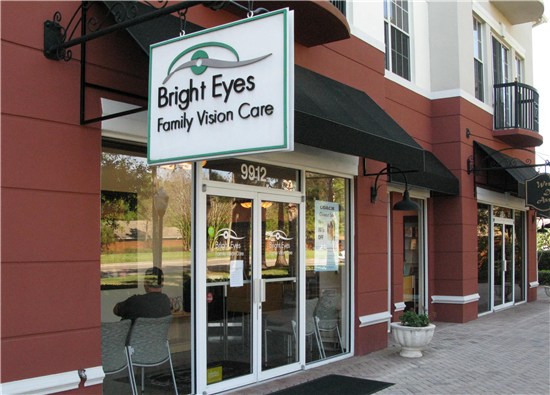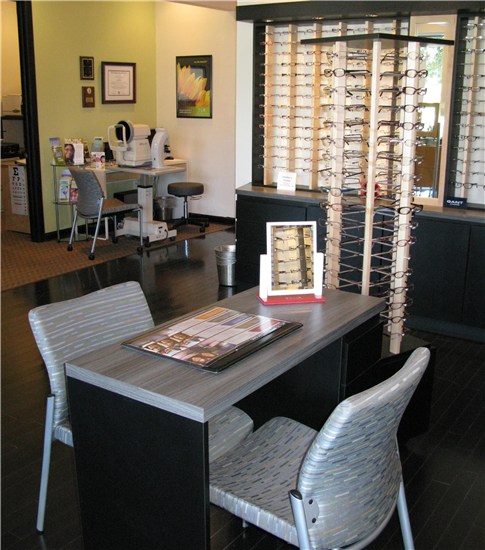By Nathan Bonilla-Warford, OD 
It was time for us to go.The 1,000-square-footoffice that I purchased in 2006 was simply not large enough to accommodate the current patient demand, and there was no space for additional equipment and staff that were necessary for us to continue to grow. Additionally, a dog groomer had set up shop next door, and the barking and howling was driving me crazy.
 I had done a fair amount of research on practice relocation and I knew some things:
I had done a fair amount of research on practice relocation and I knew some things:
It’s usually worth it. Although building and relocating to a new office does require capital (which usually means business loans), the move generally allows for improved office efficiency. I only had one exam room and no matter how we tried to organize patient flow, we simply were not going to be able to see more patients without a second exam room. We are now able to see more patients, with no increase in staff.
Educating the staff and getting buy-in is important.For any large change, this is true. In my case, the staff was as ready for amove as I was because they were frustrated with the small office. This helped during difficult or complex portions of the relocation.
Moving up is good. The new office impresses current patients with thenew layout. The expansion is seen as asign of success and gives patients something to talk about.We not only wanted to get “bigger” but get “nicer” with the new space.
New equipment that can provide a big “wow” factor. It also should generate additional revenue. I always wanted a high-quality slit lamp camera and a variety of vision therapy equipment but didn’t have space, until the move.
A short-distance move can gain increase visibility. The new location gains attention of potential patients in the neighborhood, increasing patient acquisition. Already, patients who live nearby (who didn’t know we existed) havenoticed our new location.
Have realistic expectations. Everything takes longer, is more expensive, and may not work as expected the first go-around. From not passing the first fire code inspection to delays on equipment delivery, we had to be flexible. We didn’t take it personally. This is county government we aredealing with.
Don’t hide from your patients! It is vitally important to communicate the move to your current patient base so you don’t lose and confuse them. We used patient letters, e-mails, our website, Facebookand Twitter to get the word out.
But practicing optometry, like life, is best learned by doing. So while I found all of the above to be true, I also learned a lot during the office relocation. Most of  these things I was generally aware of, but didn’t appreciate until I had to deal with them personally:
these things I was generally aware of, but didn’t appreciate until I had to deal with them personally:
Getting bids on services is worth the hassle. For some simpler services, we simply sought word-of-mouth recommendations and went with them. We thought we were saving time. However, it became obvious that for computer/IT services we were being overcharged and were not getting the level of expertise we expected.
Hire a lawyer. This again is an important, common sense thing. However, I originally thought of a lawyer as a form of costly “insurance” in case the situation got out of hand. What I learned was that there were a few simple, straightforward steps that actually caused the legal services to pay for themselves, such as negotiating tenant improvement and one month of free rent during the move.
Do some crowd-sourcing. As you are making decisions, run your thoughts and questions by your optometric colleagues, both in person and online. You can learn a lot from the mistakes and successes of others. Based on this, we redesigned one exam room to face left to provide more ergonomic variety for doctors. We also increased the numbers of outlets throughout the office.
Go local when you can. There are several big-name companies that design and produce optometric displays and furniture. We asked around and found a local company familiar with the needs of an optometry practice. Not only were they cheaper, their service and custom production were fantastic.
All in all, the move has been great. Not only has our efficiency and profitability increased (even within a few months), but staff morale is higher as well. And, I must say, it is great to not hear those dogs barking all day.
Have any of you also recently experienced an office relocation? What were your greatest challenges and how did you meet those challenges?
Nathan Bonilla-Warford, OD,of Bright Eyes Family Vision Care in Tampa, Fla., is a graduate of Illinois College of Optometry. He is a member of the American Optometric Association, and is past president of the Hillsborough Society of Optometry, as well as chair of the Children’s Vision Committee of the Florida Optometric Association. To contact him: Doc@BrightEyesTampa.com.





















